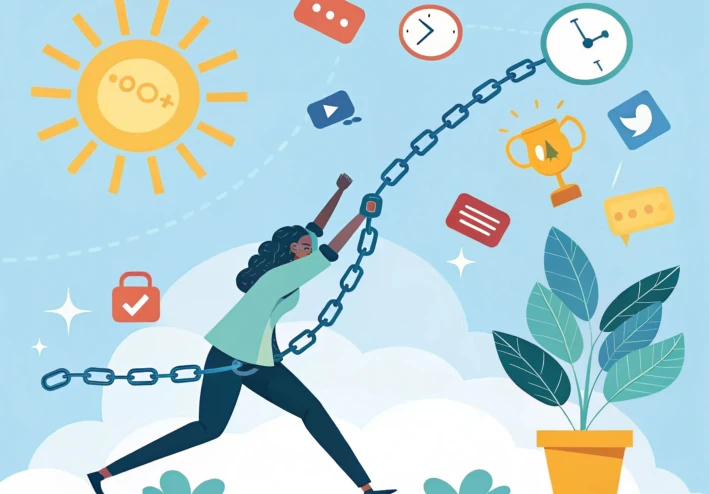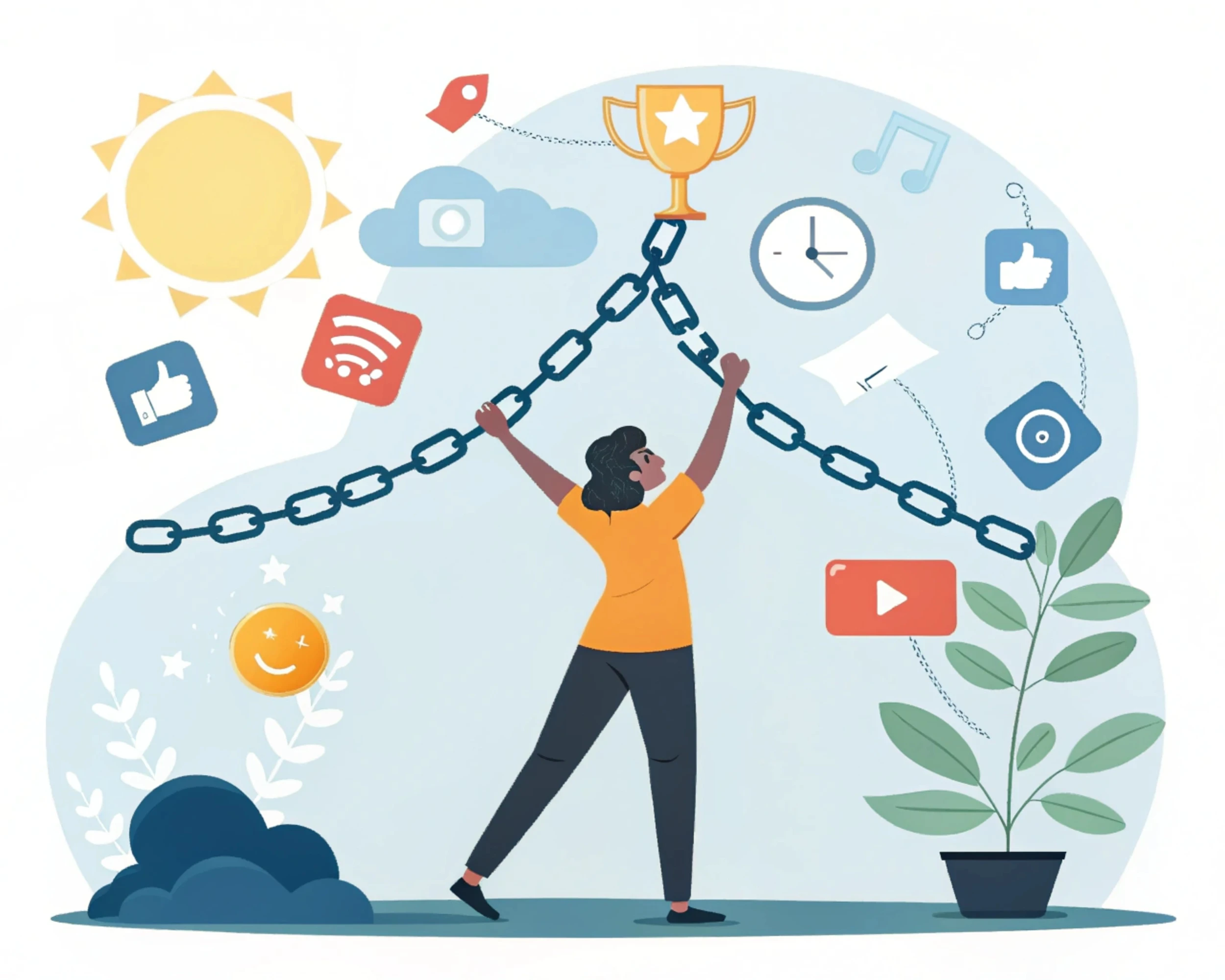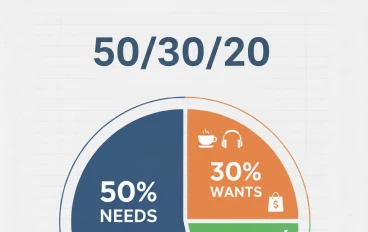
Stop Doomscrolling: Reclaim Your Time & Focus
The Secret Behind Your Wasted Time and Focus: Your Ultimate Guide to Overcoming Compulsive Browsing and Reclaiming Your Mind
Did you start your day by checking your phone only to end up in an endless scroll of worrying news, never-ending videos, and insignificant posts? Do you feel like the hours of your day are slipping through your fingers, leaving you tired, distracted, and unproductive by the end of the day?
If this is you, know that you are not alone. Millions around the world suffer from the same dilemma, but only a few know the real secret behind it. It is not merely a "lack of focus" or "laziness," but a deep-seated compulsive habit known as "Compulsive Browsing" or "Forced Scrolling".
This habit is the hidden reason behind your wasted time, dissipated energy, and constant feeling of stress. The good news is that this behavior can be broken. In this comprehensive guide, we will uncover the science behind this habit, identify its signs, and learn together 7 practical, immediately applicable steps to regain control of your mind and your time.
What is Compulsive Browsing? The Science Behind Screen Addiction
Simply put, Compulsive Browsing is that automatic behavior that drives you to scroll continuously through your phone on social media platforms or news sites, searching for new content, even if that content is negative and causes you anxiety or sadness. It is like walking in an endless loop you can't escape.
But why does this happen? The answer lies in how your brain works.
Your brain is wired to seek rewards and information. When you browse your phone, it enters a state of "reward anticipation." Every notification, every new post, is a potential "surprise" that releases a small amount of the "happiness hormone" (dopamine). This hormone makes you feel a moment of pleasure, urging you to search for more: "What will come next? What's the next post?"
This cycle (Search -> Reward -> Search again) creates a powerful behavioral addiction. You are not only seeking pleasure but also escaping from boredom or stress, entering a state resembling a digital trance where you lose all sense of time and responsibilities.

Self-Test: 5 Signs That Confirm You Have Compulsive Browsing
Before we move to the solution, ask yourself: Do you suffer from this habit? These five signs are the proof:
Losing Track of Time: You open an app to check one specific thing and are surprised to find that a full hour has passed without you noticing.
Negative Emotions: You feel anxious, exhausted, resentful, or even sad after a browsing session, yet you return to it again shortly after.
Neglecting Responsibilities: You find yourself postponing your essential tasks at work, study, or home in favor of spending more time browsing.
Obsession: Even away from your phone, your mind is preoccupied with the news you read or the posts you saw.
Failure to Stop: You have tried to reduce your phone usage before, but your attempts failed, or you quickly returned to your old habits.
If you identify with two or more signs, you are on the right path. Merely being aware of the problem is the first and most crucial step towards a solution.
The Practical Guide: 7 Guaranteed Steps to Eliminate Compulsive Browsing
These are not just theoretical tips but a strategic action plan. Follow them step by step.
Step One: Awareness and Monitoring (Know Your Enemy)
You cannot solve a problem whose size you don't know. Use the Digital Wellbeing feature on Android or Screen Time on iPhone. This feature will tell you exactly how many hours you spend on your phone and which apps consume most of your time. Discovering the number itself is often shocking enough to motivate you to change.
Step Two: Define Your Goal (Why Do You Want to Change?)
Ask yourself: What will I gain from stopping this habit? Is it increased productivity? Better quality time with family? Improved mental health? Writing your goal on paper and placing it somewhere visible will be your motivational reminder when you feel tempted.
Step Three: Design Your Environment for Success
Your willpower alone will not be enough. You must design your environment to make browsing difficult and work easy.
Move addictive apps off the home screen and put them in a distant folder.
Disable notifications for all non-essential apps. Don't let them interrupt your focus.
Use the "Focus Mode" or "Do Not Disturb" feature during work periods.
Step Four: The Five-Minute Rule
When you feel an intense urge to browse your phone out of boredom, delay that feeling for five minutes. During these five minutes, do something short and useful: drink a glass of water, walk a little, read a page of a book. Often, the urge to browse will fade after this period.
Step Five: Replace the Bad Habit with a Good One
Your brain needs activity. Instead of fighting the urge to browse, replace it. When you feel the need for a break, do something that doesn't involve a screen:
Simple stretching exercises.
Talking to a family member.
Listening to a useful podcast.
Caring for a houseplant.
Step Six: Use Technology to Your Advantage
Use apps designed to help you focus, not distract you. There are applications where you can set a specific time limit for certain apps, and after the time ends, they lock automatically.
Step Seven: Be Kind to Yourself
Change takes time. If you slip up and spend an hour browsing, don't blame yourself harshly and give up. Instead, accept it, analyze what triggered that urge (boredom? stress?), and return to your plan. Every failure is a lesson for future success.
Conclusion: Invest in Your Mind
Your time and focus are your most valuable assets. Compulsive browsing is not just an annoying habit; it is a silent drain on your potential and vital energy. Start today by implementing one step from this plan. Even the smallest changes can lead to significant results with consistency.
Share with us in the comments: What is the most significant step you will apply today to regain your focus? And which app consumes most of your time? Your experience might help someone else.






































